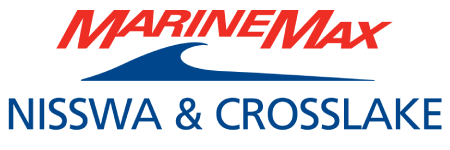Reading the Waters on a Fishing Boat
 If you'll be hitting the waters on a fishing boat, you will need a crucial skill: the ability to read the waters. This involves knowing how to find the perfect spot in order to increase your chances of catching 'the big one.' It also means knowing how to spot obstacles before they cause damage to your fishing boat. We've gathered up some beginner's tips to reading the waters on a fishing boat below. If you want more advice or want to explore fishing boats for sale, visit Nisswa Marine. We proudly serve those in Minneapolis and St. Cloud.
If you'll be hitting the waters on a fishing boat, you will need a crucial skill: the ability to read the waters. This involves knowing how to find the perfect spot in order to increase your chances of catching 'the big one.' It also means knowing how to spot obstacles before they cause damage to your fishing boat. We've gathered up some beginner's tips to reading the waters on a fishing boat below. If you want more advice or want to explore fishing boats for sale, visit Nisswa Marine. We proudly serve those in Minneapolis and St. Cloud.
How to Find the Right Spot
A key part of fishing is finding a good location to park your fishing boat. Think about the type of fish you want to catch, then think about where they are likely to be. Different species will be found in different places. Some lurk about in the depths of the water while others keep close to the shore.
If you want to find easy catches in shallow water, keep your eyes peeled for riffles. These are shallow areas of a river where the current moves fast enough to make white-capped rapids.
Another thing to look for is a river run. Species such as trout tend to be commonly found here. The current will move at a more moderate pace. Another key thing to seek out is a river pool. This involves a slow current going through deeper water. Check these areas after key feeding times where fish are likely to be found.
How to Avoid Obstacles
Another important aspect of reading the waters is knowing how to avoid obstacles. These can cause a surprising amount of damage to your fishing boat, so it's important to steer clear.
Gather Information
Your first step is to collect whatever information you can about the waterway you are about to explore. See if you can get ahold of river charts that mark obstacles to avoid. When you are on the water, keep your eyes peeled for buoy markers that mark obstacles. This is a great first step, but remember that rivers continually change in their landscape. You can't rely on charts alone because they can become outdated.
Watch the Current
The current can give you clues as to obstacles in the area. If the waters look to be moving around something, odds are it is an obstacle. Watch how debris flows down the waterway. If it stays in one place despite the current, it's likely stuck on an obstacle.
Steer Clear of Debris
Avoid debris as much as you can. While it may only look like a small object, you don't know what's lurking beneath the surface. A small branch could be connected to a massive log that could cause damage to your fishing boat. If you start to feel your fishing boat hit debris, reduce your speed and go slowly. Plowing through the obstacle can easily result in damage to your fishing boat. As the saying goes, slow and steady wins the race.
We hope you found this guide helpful. If you need to fix up your fishing boat before your next voyage, bring it to the parts replacement and service department at Nisswa Marine. Our experts can get your fishing boat ready to hit the waters in no time. We also offer a range of fishing boats for sale if you are looking to buy. Whatever you need, you can find with us. We are located in Nisswa, MN, and we also serve those in Minneapolis and St. Cloud.
